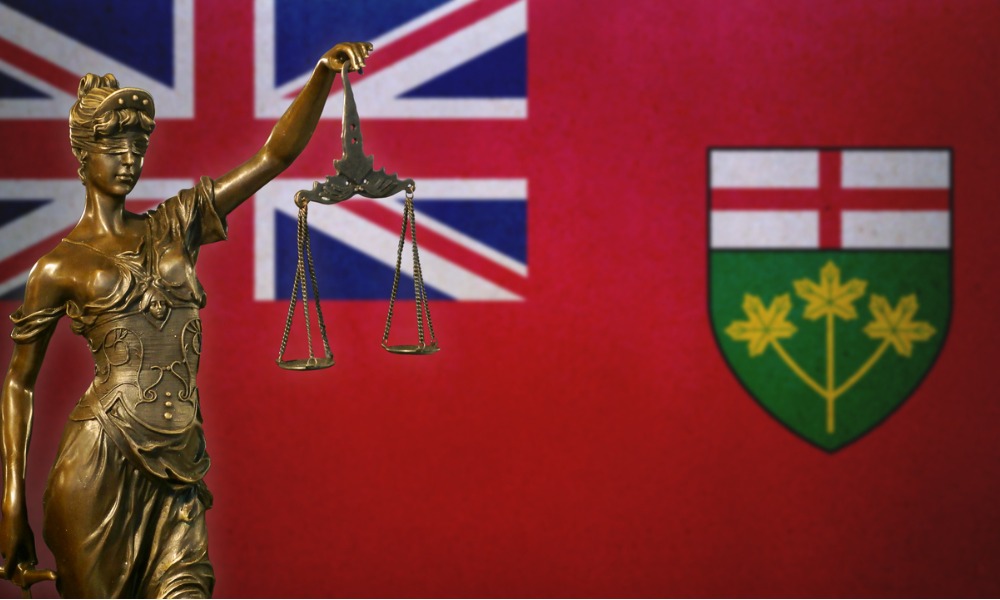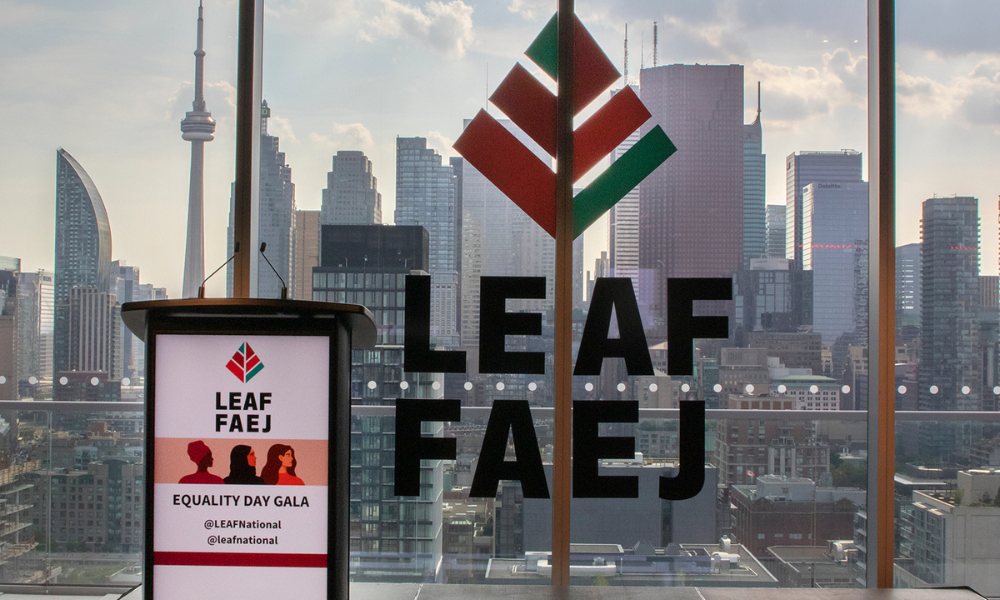WINDSOR - The Windsor-Detroit area might provide no better example of the irrelevance of national borders when it comes to environmental pollution.
 The cities, being less than a couple of kilometres from one another, share the same air and water - the Detroit River and neighbouring Lake St. Clair.
The cities, being less than a couple of kilometres from one another, share the same air and water - the Detroit River and neighbouring Lake St. Clair.
In fact, studies have shown that Windsor is one of Canada’s most polluted cities, mainly from factories not just in Detroit but throughout the U.S. Midwest - the smoke from which is largely emitted by coal-burning electrical generating plants that carries on prevailing winds to the tip of the southwestern Ontario peninsula.
But in other ways, Windsor-Detroit is similar to other Canadian and U.S. border regions plagued by sources of pollution from the other side of the border, and for which communities have over decades sought remedies with varying degrees of success.
But a professor of environmental law at Detroit’s Wayne State University says winning successful claims against polluters, even if they’re not in your own country, is easier than ever.
Noah Hall, a specialist in international environmental law and trans-border pollution, spoke at the University of Windsor last month. Hall said that while it might be easy for Canadians in southwestern Ontario to point the blame at their U.S. counterparts for contaminating skies and waters, when it comes to the two countries as a whole, neither occupies a greater moral position. Each creates its fair share of pollution that does harm in the other country. “There’s no clear good guy or bad guy,” he said.
For example, half of the water systems flow from Canada to the United States, and vice versa. Ditto for air.
“We see the same thing with air pollution,” he said, with 51 per cent coming from the U.S. and 49 per cent from Canada.
Hall said that as Canada and the United States have sought remedies to ameliorate pollution - whether through adjudication, negotiation, or litigation - the two created a rather “enlightened” system for resolution. But the newest and perhaps most effective avenue, at least in remedying specific pollution nuisances, has been the use of domestic courts, notably in the United States where, more than in Canada, citizens have been recognized in bringing pollution claims.
But Hall said addressing pollution issues between the countries is hardly a new thing. Canada and the United States have for almost a century sought to redress environmental grievances through international agreements and agencies.
For example, the Boundary Waters Treaty of 1909 imposed a strict obligation on both countries not to pollute the waters they share, and created the International Joint Commission (IJC) to research and adjudicate disputes, though no joint application has ever been made for a binding arbitration decision. Instead the IJC has issued numerous reports, the conclusions of which have been used for diplomatically resolving matters and as a basis for new government policy.
As far back as 1931, in the first significant North American environmental case, the IJC had a hand in recommending damages that eventually were upheld by an international adjudication panel. This concerned a Trail, B.C. smelter’s sulphur dioxide emissions harming Washington state landowners just a few miles away.
The IJC’s recommended award was $350,000 in accrued damages. But the United States, which represented the landowners, rejected the IJC’s other finding that future harm would not occur. An international panel - a Canadian, an American and a Belgian - decided in favour of the United States on the basis of U.S. and international law.
“This is one of the defining moments in international environmental law,” Hall said, with the liability of trans-boundary pollution becoming a “princple” eventually reinforced in the 1972 Stockholm and 1992 Rio United Nation environmental declarations.
Yet despite all that, the decision “stands alone” and the United States never again sided with its residents in an espousal action against another country, Hall said. One reason was the time it took - 10 years over the Depression and Second World War - for “resolving what in essence was a simple nuisance dispute.” And the feds were reluctant “to take on these claims because of the glass house syndrome,” he said.
Aside from the successes of the IJC, that was pretty much the state of things until environmental law took a huge leap forward with the advent of Earth Day in 1970 and the start of the modern era’s environmental activism.
The Great Lakes Water Quality Agreement was signed in 1972 and revised a couple of times since. In 1993, Canada, the United States, and Mexico signed the North American Agreement on Environmental Co-operation, a side agreement to NAFTA with a commission based in Montreal with no adjudicative authority but the power to fact find on complaints from citizens into how countries are not enforcing their environmental laws. It has now received 54 citizen submissions and published 11 factual records.
While these initiatives have relied on diplomatic efforts to solve disputes, the latest frontier - both symbolically and literally - has been going to court in the U.S. even if the grievor is Canadian, Hall said.
There are a couple of notable cases. One is a complaint by Manitoba over the potential for invasive species from the Missouri River Basin to get into Lake Winnipeg and Hudson Bay from a North Dakota water diversion project. The other revolves around the same Trail, B.C. smelter as decades earlier, this time with a complaint by Washington state natives over the effect on their land from slag washing downstream from the plant along the Columbia River.
In the first case, Province of Manitoba v. Norton, in 2005, Manitoba launched a civil action (Canada filed an amicus brief) against U.S. interior secretary Gale Norton pursuant to the National Environmental Policy Act (NEPA) in U.S. District Court over lack of preparation of an environmental impact statement (EIS) on potential for environmental harm.
The court rejected the U.S. government’s argument that Canada could have dealt with the issue under international water treaties, saying it has multiple avenues of redress. The United States also argued the NEPA doesn’t apply outside its borders.
But the court said the same harm could be caused to domestic waters as to foreign waters and the procedural violation occurred when an EIS wasn’t prepared. An injunction was also issued against proceeding with the project, pending impact studies. The case is now under appeal at the District of Columbia Circuit Court.
The second case, Pakootas v. Teck Cominco Metals Ltd., in 2004, is about the Trail, B.C. zinc smelter that is now owned by Teck Cominco Ltd. The dispute started with the U.S. Environmental Protection Agency determining Teck Cominco was at fault in discharging hundreds of thousands of tons of slag, and made an order to the company for remedial investigation.
Teck Cominco rejected the order, saying the EPA had no jurisdiction on Canadian territory.
Two tribe members then sued the company, saying it was liable under the U.S. Comprehensive Environmental Response, Compensation and Liability Act (CERCLA).
They won in U.S. District Court, which decided Teck Cominco knew its slag would migrate to the United States and cause harm. The court also found that, for CERCLA claims, what was relevant was where the cleanup would take place (in Washington State) and not at the pollution’s source (in Canada).
The case went to appeal at the Ninth Circuit, where the court found that Teck Cominco’s extraterritorial argument didn’t apply. The reason is “because the contaminated water body is in the U.S.,” Hall said. Teck Cominco has requested leave to appeal to the U.S. Supreme Court.
Hall said these cases show “the door [of the U.S. legal system] has basically been thrown wide open” for resolving international environmental disputes. “This is a great thing.”
And the fact a plaintiff is from Canada “is really not going to affect the outcome.” For Canadians, he said, the actions show U.S. courts are “fair and efficient” and a good avenue for redress. Further, their actions have been upheld internationally. The NEPA’s requirement for an EIS and CERCLA’s polluter-pay principles have been adopted in the 1992 Rio Declaration.
But despite these successes, Hall cautioned that the cases’ ad hoc nature still raise “some fundamental issues” on sovereignty.
“This is not necessarily the way we want Canada and the U.S. to address their international environmental problems,” he said.
Also, certain issues and future problems may be too complex to be resolved through the courts.
Hall proposed the U.S. and Canada get around the sovereignty problem by officially acknowledging the use of the courts to resolve problems.
“Ideally, we could allow domestic litigation to resolve these disputes in a way that strengthens, not undermines, the United States-Canada relationship,” he wrote in a related article.
Hall also pointed to a submission by a working group of the Canadian and American bar associations as far back as 1979, the draft treaty on a regime of equal access and remedy in cases of trans-frontier pollution, which suggested such an approach.
 The cities, being less than a couple of kilometres from one another, share the same air and water - the Detroit River and neighbouring Lake St. Clair.
The cities, being less than a couple of kilometres from one another, share the same air and water - the Detroit River and neighbouring Lake St. Clair.In fact, studies have shown that Windsor is one of Canada’s most polluted cities, mainly from factories not just in Detroit but throughout the U.S. Midwest - the smoke from which is largely emitted by coal-burning electrical generating plants that carries on prevailing winds to the tip of the southwestern Ontario peninsula.
But in other ways, Windsor-Detroit is similar to other Canadian and U.S. border regions plagued by sources of pollution from the other side of the border, and for which communities have over decades sought remedies with varying degrees of success.
But a professor of environmental law at Detroit’s Wayne State University says winning successful claims against polluters, even if they’re not in your own country, is easier than ever.
Noah Hall, a specialist in international environmental law and trans-border pollution, spoke at the University of Windsor last month. Hall said that while it might be easy for Canadians in southwestern Ontario to point the blame at their U.S. counterparts for contaminating skies and waters, when it comes to the two countries as a whole, neither occupies a greater moral position. Each creates its fair share of pollution that does harm in the other country. “There’s no clear good guy or bad guy,” he said.
For example, half of the water systems flow from Canada to the United States, and vice versa. Ditto for air.
“We see the same thing with air pollution,” he said, with 51 per cent coming from the U.S. and 49 per cent from Canada.
Hall said that as Canada and the United States have sought remedies to ameliorate pollution - whether through adjudication, negotiation, or litigation - the two created a rather “enlightened” system for resolution. But the newest and perhaps most effective avenue, at least in remedying specific pollution nuisances, has been the use of domestic courts, notably in the United States where, more than in Canada, citizens have been recognized in bringing pollution claims.
But Hall said addressing pollution issues between the countries is hardly a new thing. Canada and the United States have for almost a century sought to redress environmental grievances through international agreements and agencies.
For example, the Boundary Waters Treaty of 1909 imposed a strict obligation on both countries not to pollute the waters they share, and created the International Joint Commission (IJC) to research and adjudicate disputes, though no joint application has ever been made for a binding arbitration decision. Instead the IJC has issued numerous reports, the conclusions of which have been used for diplomatically resolving matters and as a basis for new government policy.
As far back as 1931, in the first significant North American environmental case, the IJC had a hand in recommending damages that eventually were upheld by an international adjudication panel. This concerned a Trail, B.C. smelter’s sulphur dioxide emissions harming Washington state landowners just a few miles away.
The IJC’s recommended award was $350,000 in accrued damages. But the United States, which represented the landowners, rejected the IJC’s other finding that future harm would not occur. An international panel - a Canadian, an American and a Belgian - decided in favour of the United States on the basis of U.S. and international law.
“This is one of the defining moments in international environmental law,” Hall said, with the liability of trans-boundary pollution becoming a “princple” eventually reinforced in the 1972 Stockholm and 1992 Rio United Nation environmental declarations.
Yet despite all that, the decision “stands alone” and the United States never again sided with its residents in an espousal action against another country, Hall said. One reason was the time it took - 10 years over the Depression and Second World War - for “resolving what in essence was a simple nuisance dispute.” And the feds were reluctant “to take on these claims because of the glass house syndrome,” he said.
Aside from the successes of the IJC, that was pretty much the state of things until environmental law took a huge leap forward with the advent of Earth Day in 1970 and the start of the modern era’s environmental activism.
The Great Lakes Water Quality Agreement was signed in 1972 and revised a couple of times since. In 1993, Canada, the United States, and Mexico signed the North American Agreement on Environmental Co-operation, a side agreement to NAFTA with a commission based in Montreal with no adjudicative authority but the power to fact find on complaints from citizens into how countries are not enforcing their environmental laws. It has now received 54 citizen submissions and published 11 factual records.
While these initiatives have relied on diplomatic efforts to solve disputes, the latest frontier - both symbolically and literally - has been going to court in the U.S. even if the grievor is Canadian, Hall said.
There are a couple of notable cases. One is a complaint by Manitoba over the potential for invasive species from the Missouri River Basin to get into Lake Winnipeg and Hudson Bay from a North Dakota water diversion project. The other revolves around the same Trail, B.C. smelter as decades earlier, this time with a complaint by Washington state natives over the effect on their land from slag washing downstream from the plant along the Columbia River.
In the first case, Province of Manitoba v. Norton, in 2005, Manitoba launched a civil action (Canada filed an amicus brief) against U.S. interior secretary Gale Norton pursuant to the National Environmental Policy Act (NEPA) in U.S. District Court over lack of preparation of an environmental impact statement (EIS) on potential for environmental harm.
The court rejected the U.S. government’s argument that Canada could have dealt with the issue under international water treaties, saying it has multiple avenues of redress. The United States also argued the NEPA doesn’t apply outside its borders.
But the court said the same harm could be caused to domestic waters as to foreign waters and the procedural violation occurred when an EIS wasn’t prepared. An injunction was also issued against proceeding with the project, pending impact studies. The case is now under appeal at the District of Columbia Circuit Court.
The second case, Pakootas v. Teck Cominco Metals Ltd., in 2004, is about the Trail, B.C. zinc smelter that is now owned by Teck Cominco Ltd. The dispute started with the U.S. Environmental Protection Agency determining Teck Cominco was at fault in discharging hundreds of thousands of tons of slag, and made an order to the company for remedial investigation.
Teck Cominco rejected the order, saying the EPA had no jurisdiction on Canadian territory.
Two tribe members then sued the company, saying it was liable under the U.S. Comprehensive Environmental Response, Compensation and Liability Act (CERCLA).
They won in U.S. District Court, which decided Teck Cominco knew its slag would migrate to the United States and cause harm. The court also found that, for CERCLA claims, what was relevant was where the cleanup would take place (in Washington State) and not at the pollution’s source (in Canada).
The case went to appeal at the Ninth Circuit, where the court found that Teck Cominco’s extraterritorial argument didn’t apply. The reason is “because the contaminated water body is in the U.S.,” Hall said. Teck Cominco has requested leave to appeal to the U.S. Supreme Court.
Hall said these cases show “the door [of the U.S. legal system] has basically been thrown wide open” for resolving international environmental disputes. “This is a great thing.”
And the fact a plaintiff is from Canada “is really not going to affect the outcome.” For Canadians, he said, the actions show U.S. courts are “fair and efficient” and a good avenue for redress. Further, their actions have been upheld internationally. The NEPA’s requirement for an EIS and CERCLA’s polluter-pay principles have been adopted in the 1992 Rio Declaration.
But despite these successes, Hall cautioned that the cases’ ad hoc nature still raise “some fundamental issues” on sovereignty.
“This is not necessarily the way we want Canada and the U.S. to address their international environmental problems,” he said.
Also, certain issues and future problems may be too complex to be resolved through the courts.
Hall proposed the U.S. and Canada get around the sovereignty problem by officially acknowledging the use of the courts to resolve problems.
“Ideally, we could allow domestic litigation to resolve these disputes in a way that strengthens, not undermines, the United States-Canada relationship,” he wrote in a related article.
Hall also pointed to a submission by a working group of the Canadian and American bar associations as far back as 1979, the draft treaty on a regime of equal access and remedy in cases of trans-frontier pollution, which suggested such an approach.







